18 UNESCO World Heritage Sites Every Traveler Should Experience
UNESCO World Heritage Sites are recognized for their outstanding cultural or natural significance. These sites are safeguarded to protect the history, traditions, and environments that make them unique. Whether you’re exploring ancient ruins or lush landscapes, UNESCO sites offer unparalleled travel experiences. Each site tells a powerful story about our world’s history and its preservation. Embark on a journey to discover these exceptional locations that every traveler should experience.
This post may contain affiliate links, which helps keep this content free. Please read our disclosure for more info.
The Great Wall of China

The Great Wall of China is a historic series of fortifications stretching over 13,000 miles. It was built to protect Chinese states from invasions and is one of the most recognizable landmarks in the world. The wall spans diverse landscapes, from mountains to deserts, showcasing the ingenuity of ancient engineering. Its cultural and historical significance makes it an essential site for visitors interested in history and architecture. Walking along this remarkable structure gives travelers a glimpse into China’s past and its strategic defenses.
The Great Wall is a testament to the determination and effort of the people who built it over centuries. Visitors can explore various sections of the wall, with some offering spectacular views and hiking opportunities. The site also features several watchtowers and restored areas that enhance the experience. As one of the world’s largest building projects, it remains a symbol of China’s strength and unity. A visit here is an opportunity to connect with one of the world’s most influential ancient civilizations.
Machu Picchu
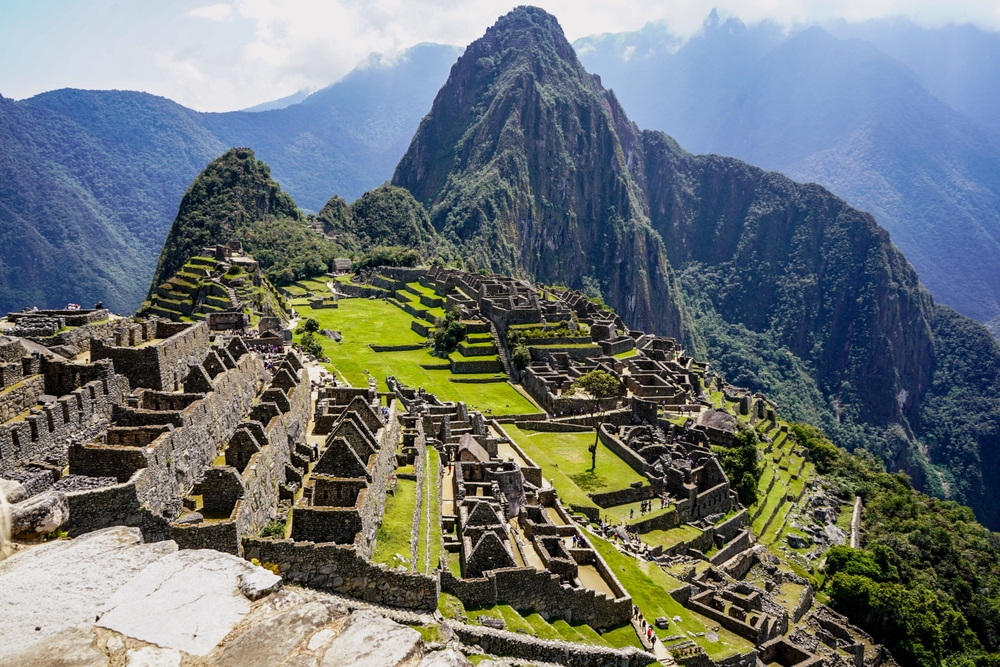
Machu Picchu, an ancient Incan city, is nestled high in the Andes Mountains. It was built in the 15th century and is an architectural marvel of the Inca Empire. The site is renowned for its precise stone construction and breathtaking views over the surrounding valleys. As a UNESCO World Heritage Site, it represents the cultural and scientific achievements of the Inca civilization. The mysterious nature of its purpose and construction continues to intrigue historians and travelers alike.
Machu Picchu’s remote location adds to its allure, making it a must-see for adventurous travelers. Hikers often take the Inca Trail, a multi-day trek through ancient paths, to reach the site. Once there, visitors can explore the terraced fields, temples, and plazas that make the site so captivating. The panoramic views from the mountain peaks surrounding Machu Picchu are nothing short of spectacular. For anyone seeking to experience the magic of the ancient world, this site is a must-visit.
The Colosseum
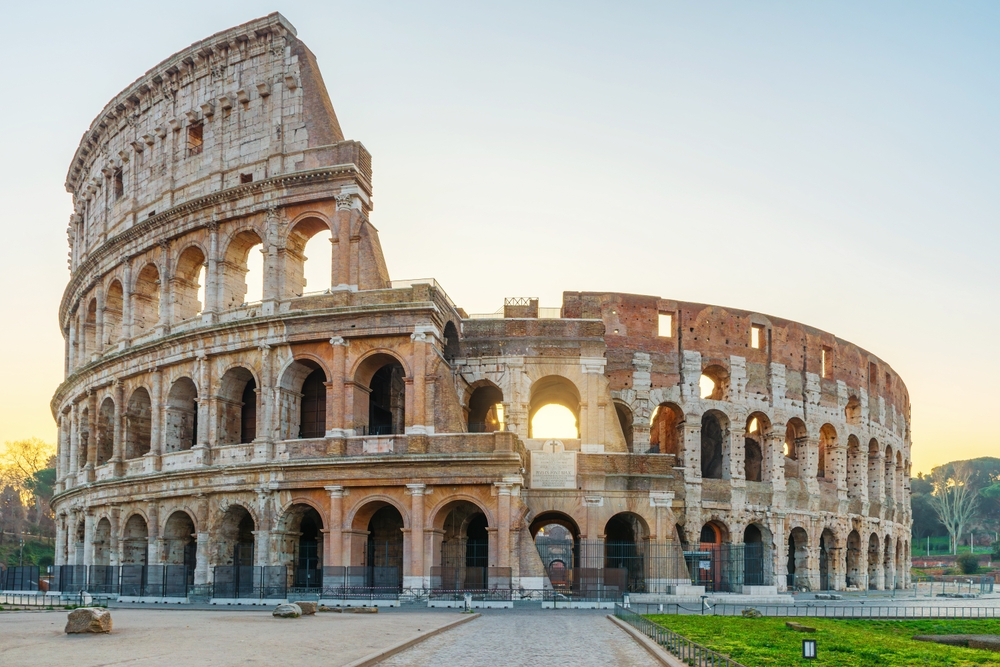
Located in the heart of Rome, the Colosseum is a symbol of ancient Roman engineering and entertainment. This enormous amphitheater once hosted gladiator battles and public spectacles for the Roman populace. As one of the most famous landmarks in the world, it is a testament to Roman architectural skill and the grandeur of their public events. The Colosseum’s rich history as a center of entertainment and power makes it an iconic UNESCO World Heritage Site. It offers visitors a chance to step back into the Roman Empire’s ancient past.
Today, visitors can tour the Colosseum’s grand interior, where they can imagine the sounds of cheering crowds. The ruins still stand tall, with some areas partially reconstructed to reveal the structure’s original design. The Colosseum’s influence extends beyond Rome, inspiring countless amphitheaters across the world. Visiting the Colosseum is like experiencing a living museum of Rome’s glorious past. It’s an essential destination for those interested in ancient history and Roman culture.
The Pyramids of Giza

The Pyramids of Giza, located on the outskirts of Cairo, are the last remaining wonders of the ancient world. These massive stone structures were built as tombs for Egyptian pharaohs more than 4,500 years ago. The Great Pyramid, in particular, is a marvel of engineering and remains one of the most impressive monuments on Earth. Recognized by UNESCO, the pyramids are a symbol of Egypt’s ancient power and architectural achievements. Their scale and precision continue to fascinate visitors from all over the globe.
Visitors to the Giza Plateau can explore the pyramids and the Sphinx, which stands guard over the site. The area is a fascinating blend of ancient history and modern Egyptian culture. Though the pyramids have withstood millennia, ongoing efforts aim to preserve them for future generations. The rich history and mystery surrounding these ancient tombs make them an unforgettable stop for travelers. The Pyramids of Giza offer a once-in-a-lifetime experience for those drawn to ancient wonders.
The Taj Mahal
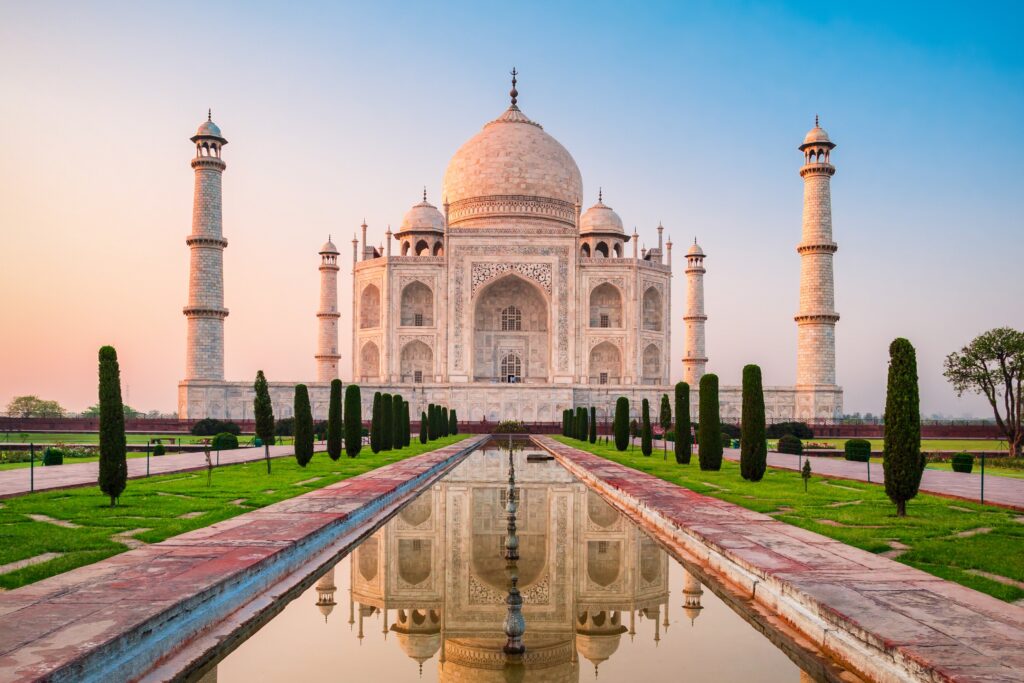
The Taj Mahal, located in Agra, India, is a stunning symbol of love and architectural brilliance. Built by Emperor Shah Jahan in memory of his wife Mumtaz Mahal, this white marble mausoleum is considered one of the most beautiful buildings in the world. The Taj Mahal is a UNESCO World Heritage Site due to its exquisite design and historical significance. Its intricate carvings and symmetrical gardens are a testament to the craftsmanship of its time. The Taj Mahal stands as a romantic symbol of enduring love, attracting millions of visitors each year.
The monument is surrounded by lush gardens and serene water features, enhancing its majestic beauty. Travelers can marvel at the detailed artwork and the breathtaking views of the Yamuna River from the site. The Taj Mahal is especially stunning at sunrise and sunset, when its marble surface reflects the changing light. It is a must-see for anyone interested in experiencing the magnificence of Mughal architecture. A visit to the Taj Mahal offers a glimpse into India’s rich cultural and historical heritage.
The Acropolis
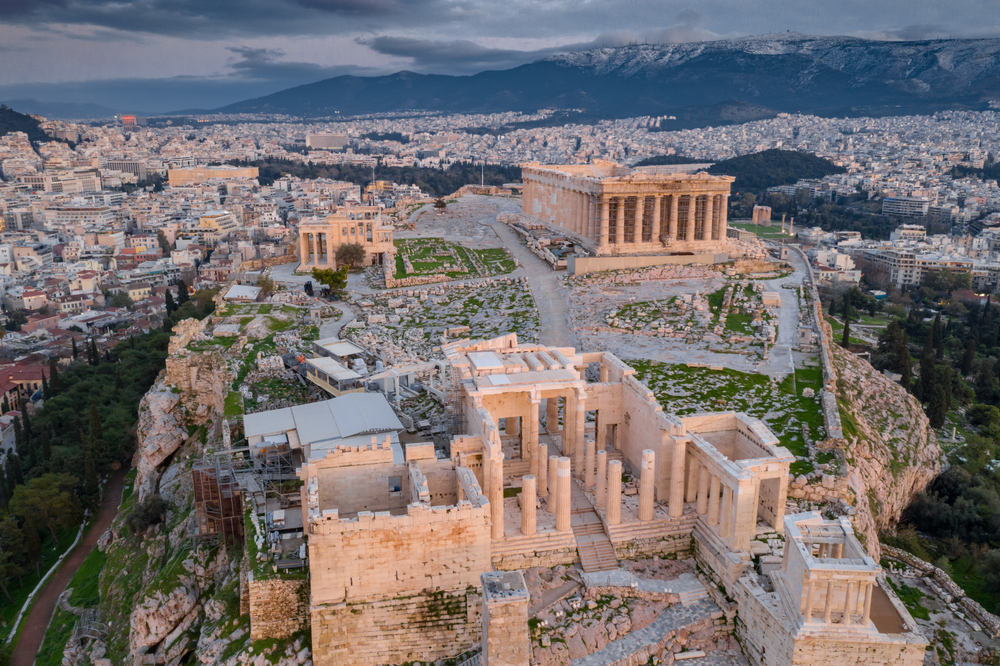
The Acropolis of Athens is one of the most significant cultural sites in Europe. It is home to several ancient buildings, including the Parthenon, dedicated to the goddess Athena. The Acropolis has been a center of Greek civilization for over two millennia, representing the artistic, cultural, and intellectual achievements of ancient Greece. It was honored as a UNESCO World Heritage Site for its exceptional historical and architectural importance. The Acropolis offers visitors a rare opportunity to explore the birthplace of democracy and Western philosophy.
Standing atop the Acropolis, visitors can enjoy panoramic views of Athens and beyond. The Parthenon, with its stunning columns and detailed sculptures, is the focal point of the site. Other ruins, including the Temple of Athena Nike and the Erechtheion, are equally impressive. The site is also a symbol of Greece’s influence on art, architecture, and governance. A visit to the Acropolis is an essential experience for anyone interested in ancient civilizations.
Galapagos Islands
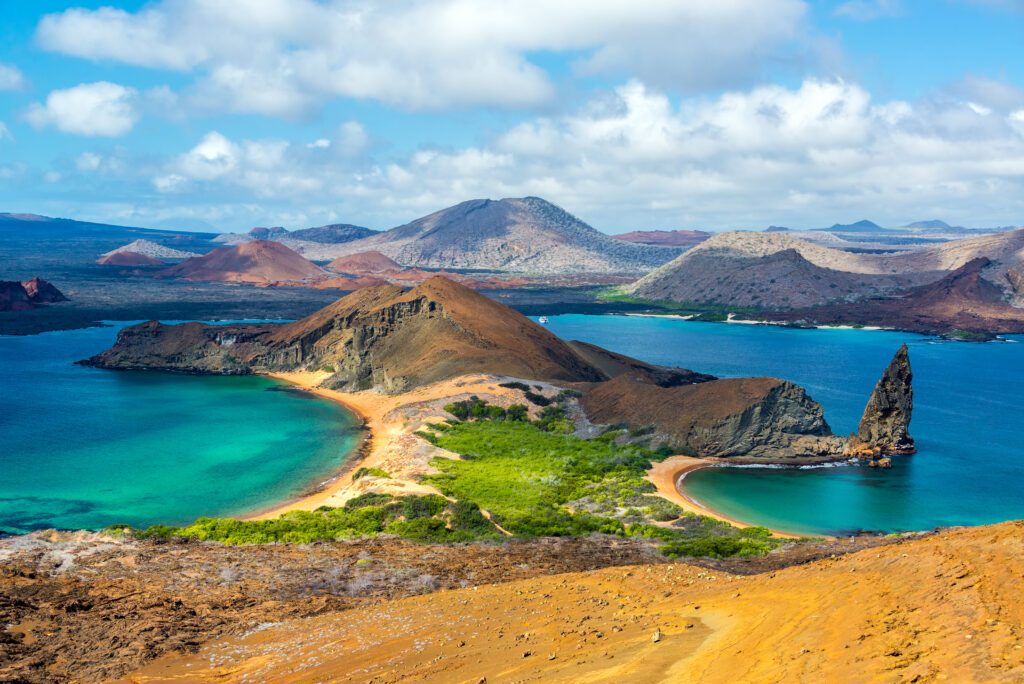
The Galapagos Islands, located off the coast of Ecuador, are famous for their unique wildlife and natural beauty. The islands’ ecosystems inspired Charles Darwin’s theory of evolution, making them a significant site for scientific research. The Galapagos were designated a UNESCO World Heritage Site due to their exceptional biodiversity. Visitors can explore volcanic landscapes, pristine beaches, and encounter wildlife found nowhere else on Earth, such as giant tortoises and marine iguanas. These islands are a must-visit for nature lovers and those interested in environmental conservation.
A tour of the Galapagos Islands offers close encounters with rare species in their natural habitats. The islands’ isolation has allowed for the development of unique ecosystems, making it an essential destination for scientists and travelers alike. The diverse marine life is also a major draw, with opportunities for snorkeling and diving. Guided tours and eco-friendly activities ensure that the islands are preserved for future generations. The Galapagos Islands are an unparalleled destination for wildlife enthusiasts and adventure seekers.
Angkor in Cambodia

Angkor is the largest religious monument in the world and a UNESCO World Heritage Site. Located near Siem Reap in Cambodia, it was the capital of the Khmer Empire from the 9th to the 15th century. The complex includes the famous Angkor Wat temple, known for its vast size and detailed carvings. Angkor is a cultural and historical treasure, offering a glimpse into the grandeur of an ancient civilization. Its architectural achievements are a testament to the skill of its builders.
Visiting Angkor provides an opportunity to explore temples, bas-reliefs, and statues that have withstood centuries of history. Angkor Wat is particularly notable for its intricate designs and spiritual significance. The surrounding area features numerous other temples, including Bayon Temple, which is famous for its many faces. The site is a must-see for those fascinated by ancient history and architecture. Exploring Angkor is a journey through the past, offering a chance to connect with one of Southeast Asia’s greatest empires.
Yellowstone National Park
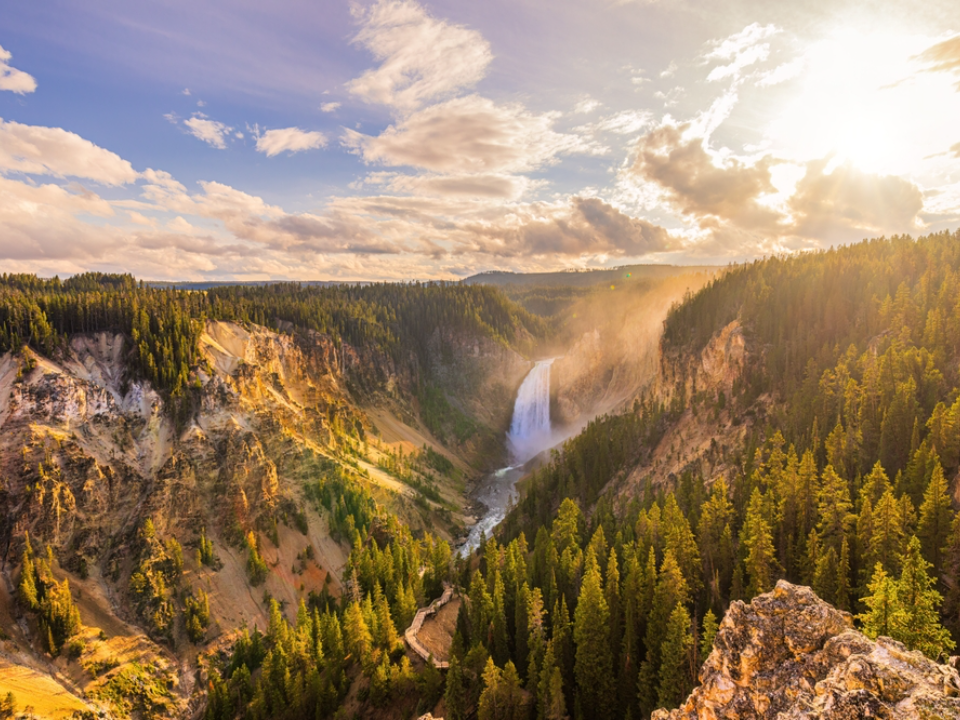
Yellowstone National Park, located primarily in Wyoming, is the first national park in the world. It is famous for its geothermal features, including geysers, hot springs, and mud pots, with Old Faithful being the most well-known. As a UNESCO World Heritage Site, Yellowstone is recognized for its unique ecosystems and diverse wildlife. The park is home to bison, wolves, and grizzly bears, offering visitors a rare chance to experience nature up close. Its vast, untouched landscapes make it an essential destination for nature lovers.
Visitors to Yellowstone can enjoy hiking, camping, and exploring over 2 million acres of wilderness. The park also offers opportunities for wildlife viewing and photography, with each season bringing a new set of experiences. Yellowstone’s geothermal activity, such as the colorful Grand Prismatic Spring, adds to its allure. The park is a prime example of environmental conservation and natural beauty. A trip to Yellowstone is an unforgettable experience for those seeking to explore the wonders of the natural world.
Alhambra in Granada

The Alhambra in Granada, Spain, is a stunning example of Moorish architecture and design. Built during the 13th and 14th centuries, this palace complex includes intricate tilework, lush gardens, and breathtaking courtyards. The Alhambra is celebrated for its artistic beauty and historical significance, making it a UNESCO World Heritage Site. Visitors can explore the palace’s beautiful halls, such as the Hall of the Ambassadors, and stroll through the peaceful Generalife gardens. The Alhambra remains a testament to the cultural exchange between Christian and Islamic Spain.
The Alhambra’s architecture is a masterpiece, blending Islamic, Christian, and Jewish elements into a harmonious design. Its courtyards, with fountains and reflecting pools, offer a serene atmosphere. The site’s strategic location on a hill provides incredible views of Granada and the surrounding mountains. The Alhambra’s history, from its time as a royal residence to its current status as a tourist attraction, adds to its charm. A visit here is a step into Spain’s rich cultural past.
Stonehenge
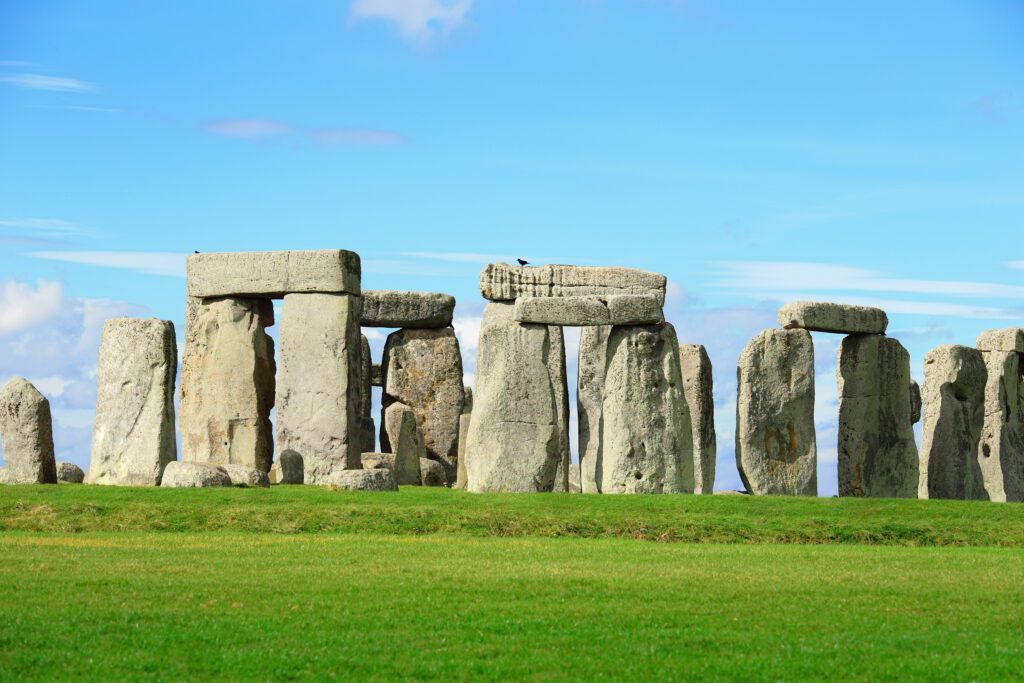
Stonehenge, located in Wiltshire, England, is one of the world’s most famous prehistoric monuments. This ancient stone circle was erected over 4,000 years ago, and its purpose remains a mystery. As a UNESCO World Heritage Site, Stonehenge is considered an important symbol of ancient human ingenuity and ritual. The site continues to fascinate visitors with its massive standing stones, which align with the solstices. A visit to Stonehenge offers a chance to experience a piece of history that has stood the test of time.
Stonehenge is part of a broader landscape that includes ancient burial mounds and other stone circles. The site’s alignment with astronomical events suggests it was used for ceremonial purposes. Visitors can explore the surrounding area, including the nearby visitor center, which offers educational exhibits. Stonehenge remains one of the most iconic symbols of Britain’s ancient past. It’s a must-see for anyone interested in prehistoric archaeology and history.
The Palace of Versailles

The Palace of Versailles is a grand symbol of French monarchy and opulence. Located just outside Paris, this stunning palace was home to French kings and queens, including Louis XIV. As a UNESCO World Heritage Site, the Palace of Versailles is recognized for its historical significance and architectural grandeur. Visitors can tour the lavish rooms, such as the Hall of Mirrors, and explore the vast gardens that surround the palace. It’s a stunning representation of 17th-century French design and power.
The palace’s elaborate architecture and interiors reflect the wealth and influence of the French monarchy. The gardens, designed by André Le Nôtre, are an example of classical French landscaping, featuring fountains, sculptures, and geometrically arranged flowerbeds. The Palace of Versailles was also the site of significant historical events, including the signing of the Treaty of Versailles in 1919. A visit to this iconic site offers a glimpse into France’s royal past and architectural achievements. It remains a top destination for anyone interested in history and art.
Iguazu National Park
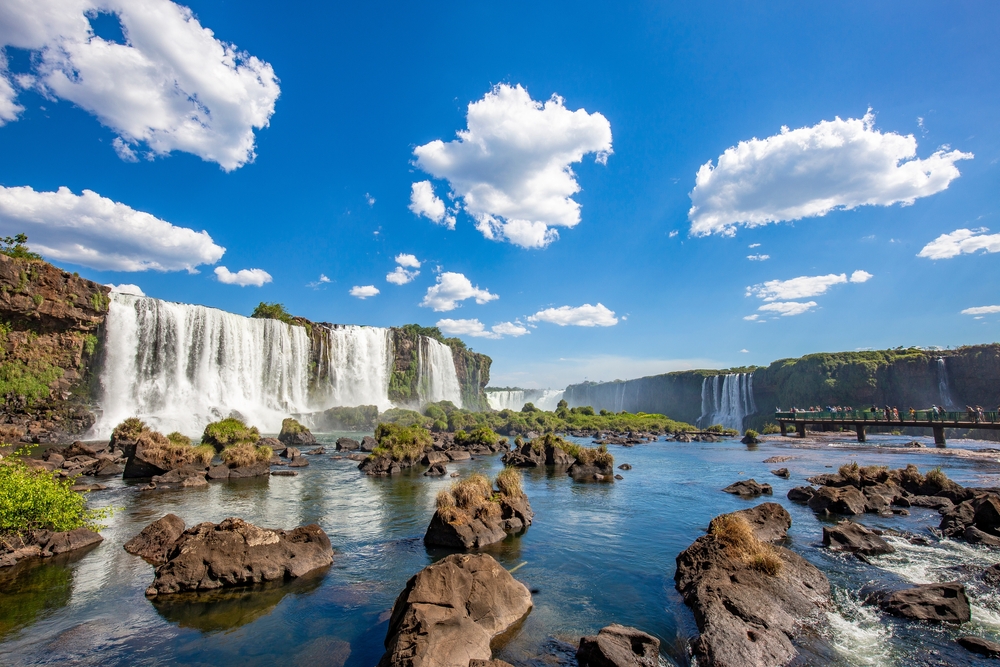
Iguazu National Park, located on the border between Argentina and Brazil, is home to the spectacular Iguazu Falls. These massive waterfalls are among the largest in the world, stretching over 1.7 miles and surrounded by lush rainforest. The site is recognized by UNESCO for its natural beauty and ecological significance. The park offers visitors the chance to experience one of nature’s most impressive water features from multiple viewpoints. Iguazu Falls is an essential destination for nature lovers and adventure seekers.
The park’s diverse ecosystems, home to numerous species of flora and fauna, make it a haven for wildlife enthusiasts. Visitors can hike along the network of trails, some leading to stunning overlooks of the falls. Boat tours provide an up-close experience with the waterfalls, allowing travelers to feel the spray from the powerful cascades. The region is also rich in indigenous history and cultural significance. A visit to Iguazu National Park is a chance to witness one of the most awe-inspiring natural wonders on Earth.
Petra
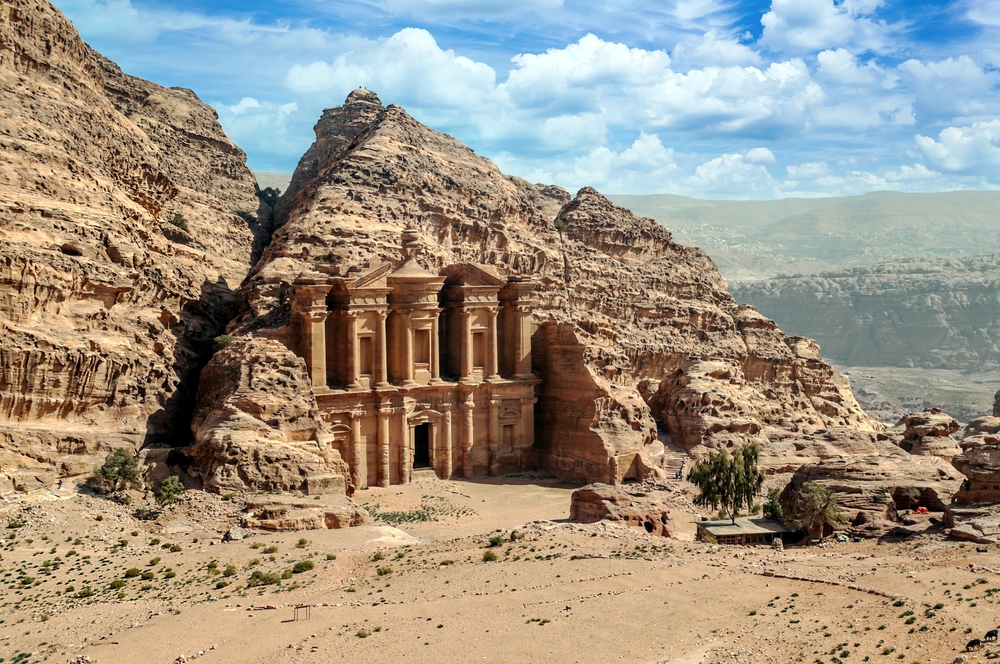
Petra, located in the Ma’an Governorate of Jordan, is a vast archaeological site famous for its rock-cut architecture. Founded by the Nabataeans around the 6th century BC, Petra was once a thriving trade city. As a UNESCO World Heritage Site, it is known for its stunning facades, like Al-Khazneh, carved directly into rose-colored sandstone cliffs. Petra’s unique construction and history make it an essential destination for history enthusiasts and travelers. Visiting Petra offers a rare glimpse into the ingenuity of the ancient Nabataean people.
The ancient city of Petra is accessible through a narrow gorge called the Siq, which leads to the heart of the city. Once inside, travelers can explore temples, tombs, and monuments, many of which are still remarkably well-preserved. Petra’s dramatic landscapes and stunning architecture have earned it a place as one of the Seven Wonders of the Modern World. The city’s history as a major trading hub adds to its significance. A visit to Petra is a journey through time, offering an unforgettable exploration of an ancient civilization.
The Sydney Opera House

The Sydney Opera House, located on Bennelong Point in Sydney Harbour, is one of the most recognizable buildings in the world. Known for its unique shell-like design, the Opera House is a symbol of Australia’s cultural and artistic achievements. As a UNESCO World Heritage Site, it is celebrated for its architectural innovation and importance to the performing arts. The venue hosts a variety of performances, from opera and ballet to theater and concerts. It’s a must-visit for anyone interested in culture and architecture.
The Sydney Opera House was designed by Danish architect Jørn Utzon and completed in 1973. Its design, inspired by sails, creates an iconic silhouette against the backdrop of Sydney Harbour. Visitors can take guided tours to learn about the building’s history and the artistic performances it hosts. The Opera House is also a cultural hub, offering exhibitions and events throughout the year. It’s an essential stop for those wanting to experience Australia’s rich cultural scene.
Mount Fuji
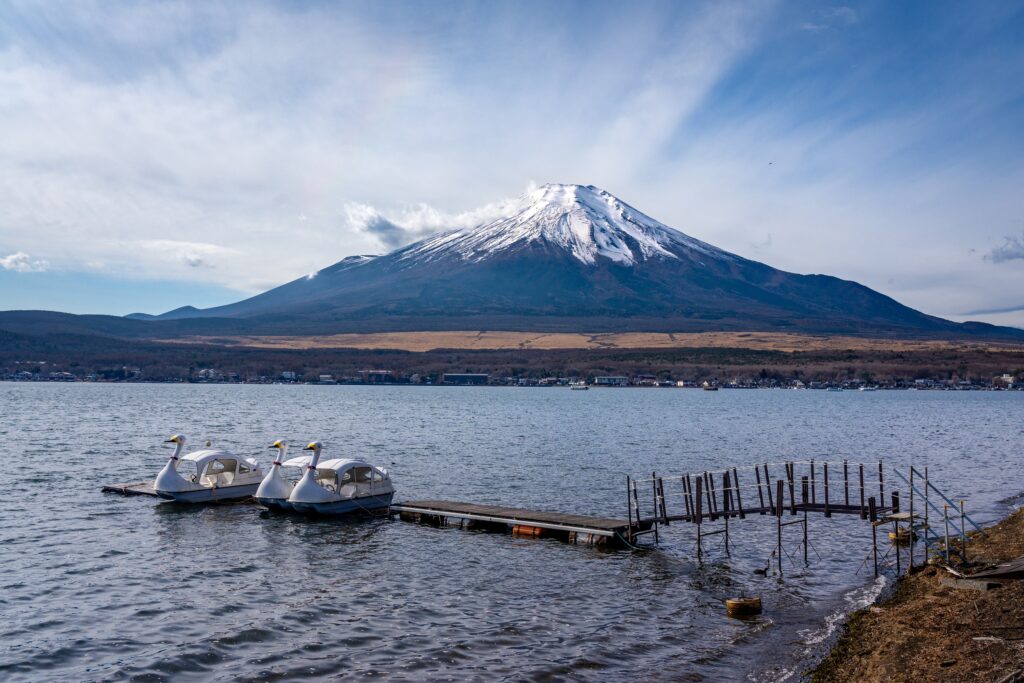
Mount Fuji, located on Honshu Island in Japan, is a sacred symbol of the country’s culture and natural beauty. Standing at 12,388 feet, it is the highest mountain in Japan and an active volcano. UNESCO designated Mount Fuji as a World Heritage Site for its significance in Japanese culture and its stunning natural beauty. The mountain has inspired countless artists and poets throughout history. Mount Fuji is a popular destination for both climbers and travelers seeking to admire its majestic beauty.
The mountain offers various routes for climbers, and the views from its summit are nothing short of breathtaking. Surrounding the mountain are lakes, forests, and shrines, which add to the spiritual atmosphere. The climb to the top is a popular activity during the summer months, though it requires preparation and physical endurance. For those who prefer a more relaxed experience, the surrounding areas provide plenty of opportunities for sightseeing. A visit to Mount Fuji is an unforgettable experience for anyone drawn to Japan’s natural wonders.
The Red Square

The Red Square in Moscow is the heart of Russia’s cultural and political history. It is home to iconic landmarks such as the Kremlin, St. Basil’s Cathedral, and Lenin’s Mausoleum. The square has been a witness to some of the most significant events in Russian history, making it a UNESCO World Heritage Site. Visitors can walk through the square, explore the stunning architecture, and learn about Russia’s past. It is an essential destination for history buffs and those seeking to understand Russia’s complex heritage.
The Red Square is surrounded by some of Moscow’s most famous buildings, including the Kremlin’s fortified walls and towers. St. Basil’s Cathedral, with its colorful onion domes, is one of the most photographed buildings in the world. The square has been the site of military parades, political rallies, and cultural celebrations. Visitors can also explore the State Historical Museum, located at the square’s northern end. A visit to Red Square is a journey through Russia’s imperial and Soviet past.
The Serengeti National Park

Serengeti National Park, located in Tanzania, is one of Africa’s most famous wildlife reserves. Known for its annual migration of wildebeest and zebras, the park is a haven for animal lovers. The Serengeti is home to the Big Five – lions, leopards, elephants, buffalo, and rhinos. Its vast, open savannas and rich biodiversity have earned it a place as a UNESCO World Heritage Site. The park offers a chance to witness the incredible wildlife and natural beauty of East Africa.
Visitors to Serengeti National Park can enjoy safari tours to observe wildlife in their natural habitats. The annual migration is one of nature’s most incredible events, attracting visitors from around the world. In addition to the safari experience, the park offers opportunities for camping, bird watching, and exploring unique ecosystems. The Serengeti’s rich cultural significance also ties it to local Maasai traditions and heritage. It’s an essential destination for those seeking to immerse themselves in Africa’s natural wonders.
This article originally appeared on Avocadu.
